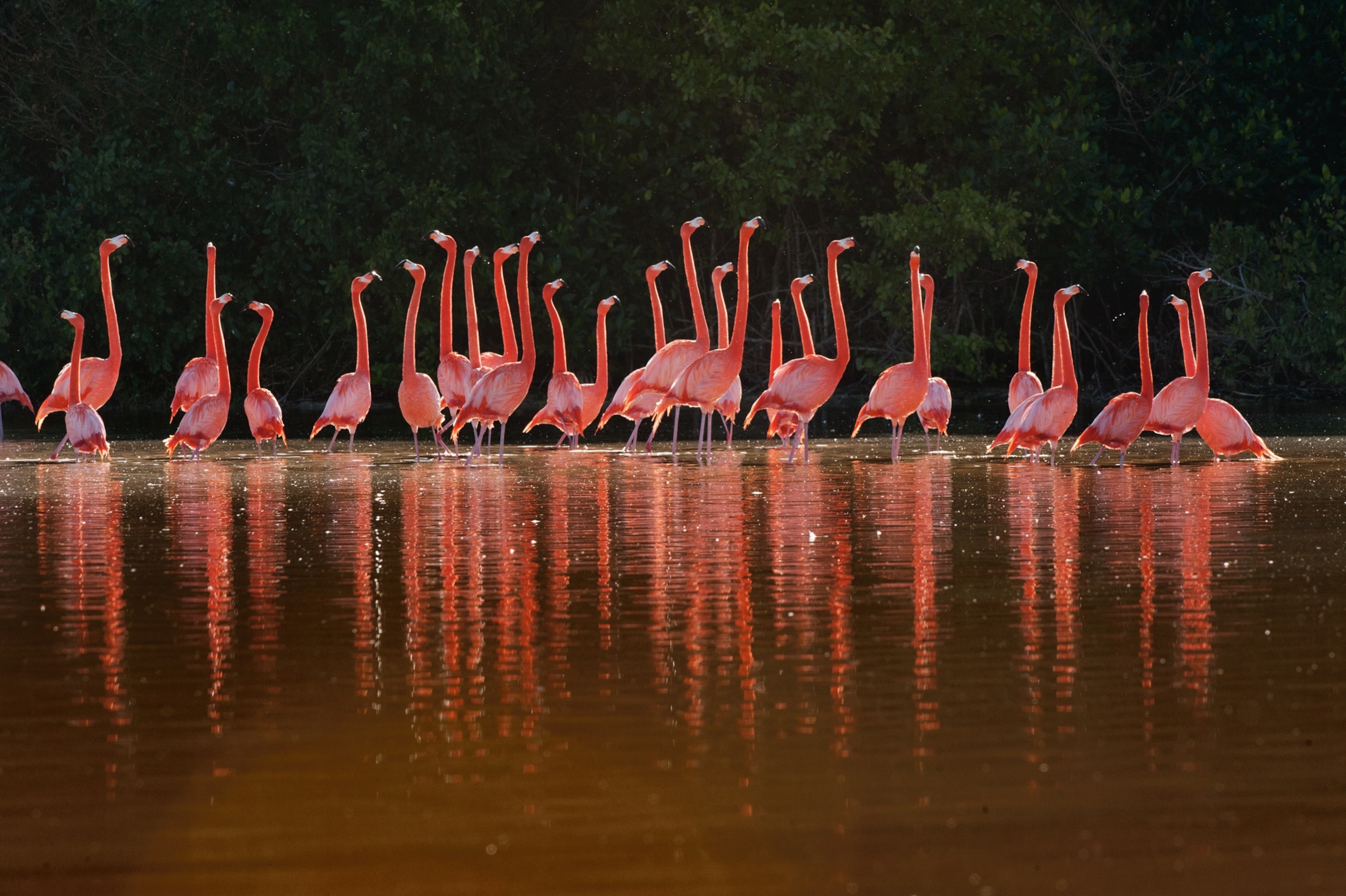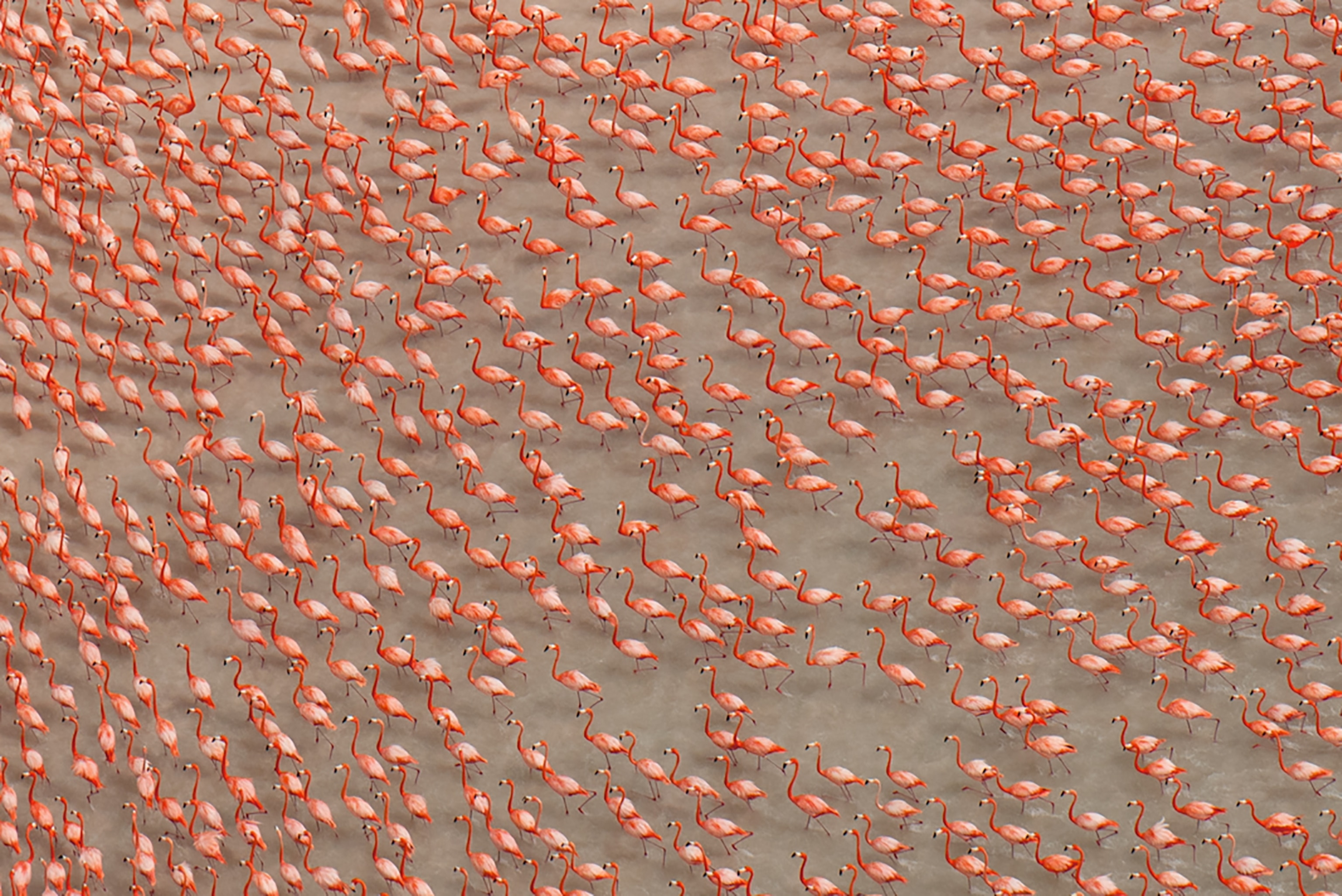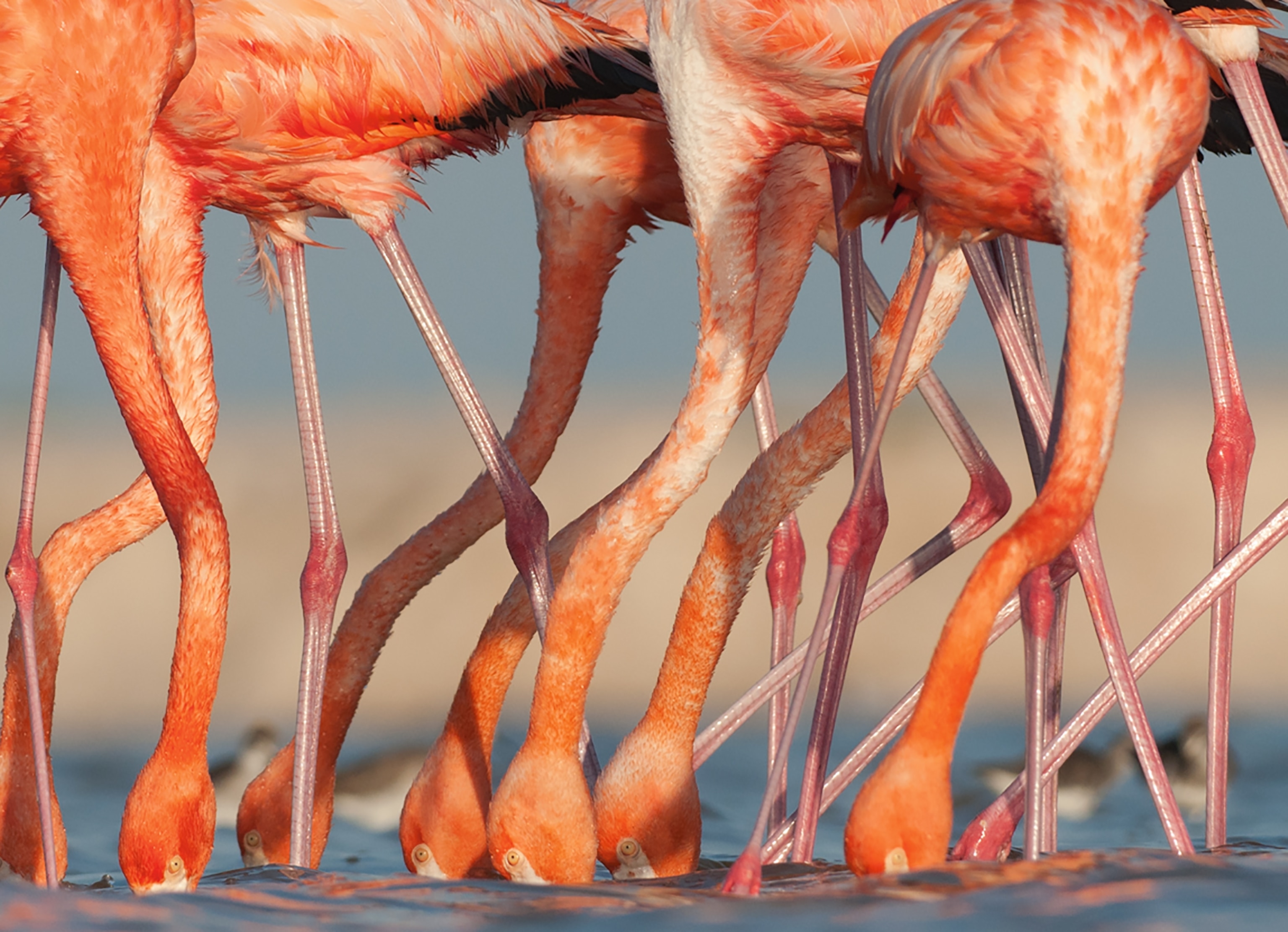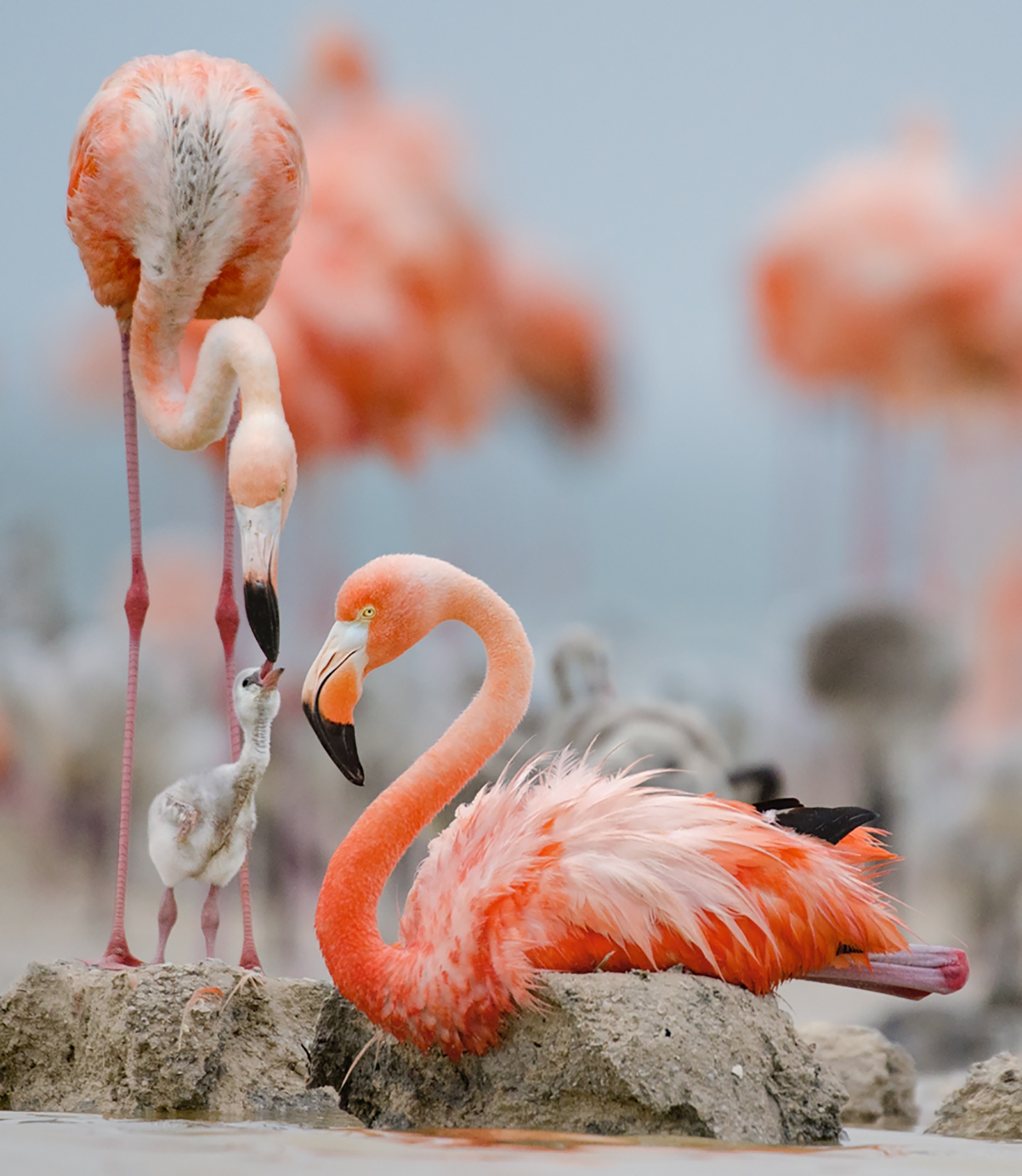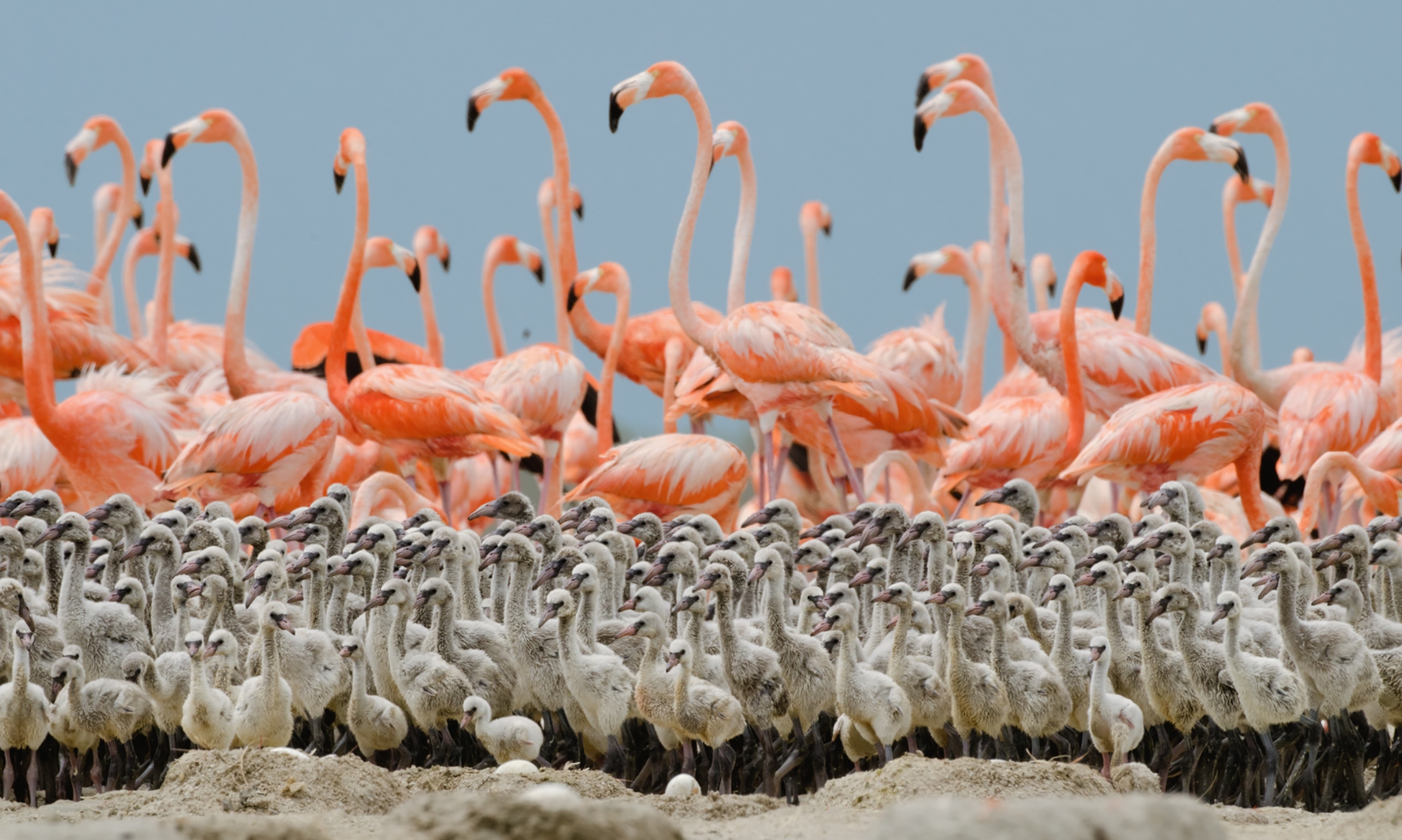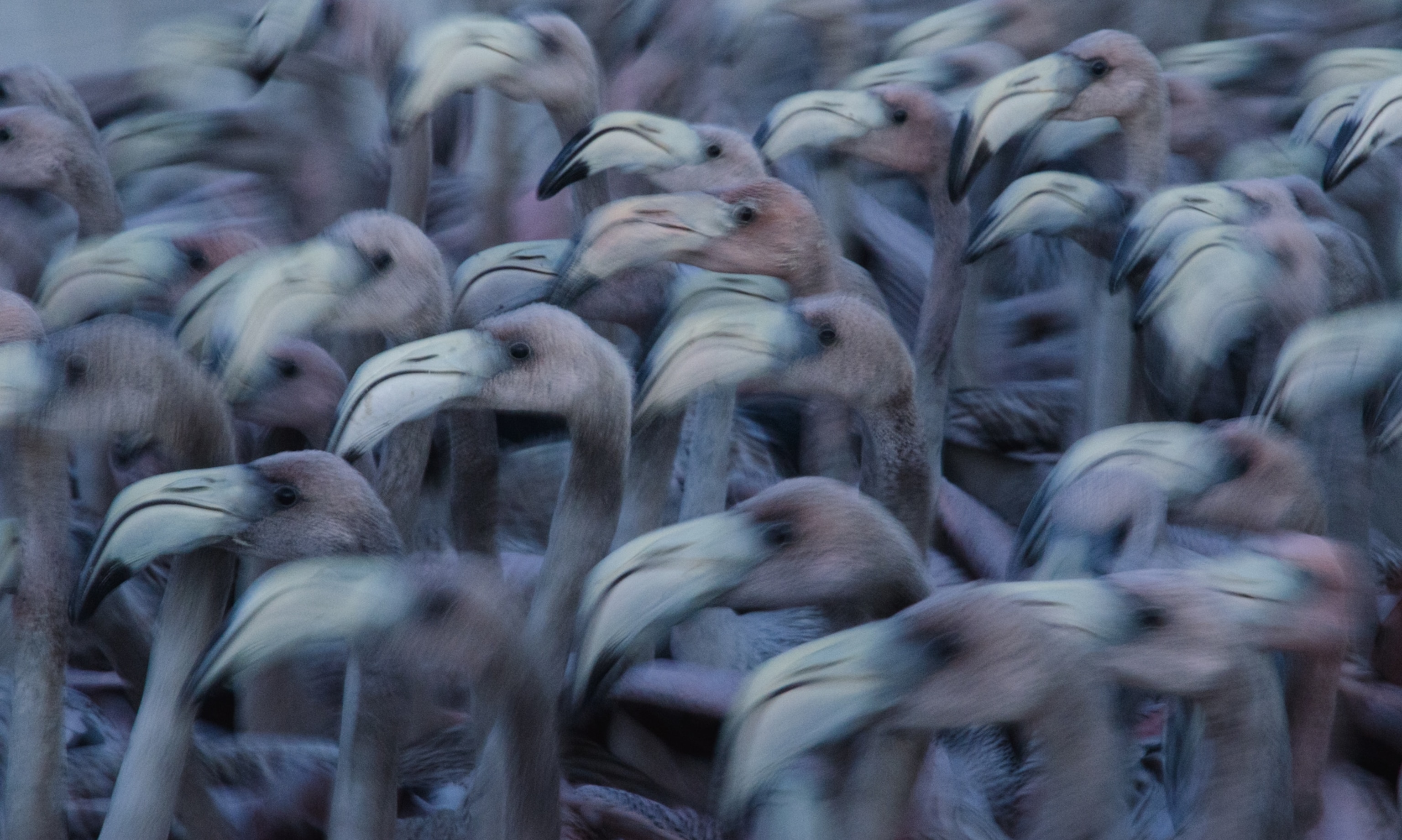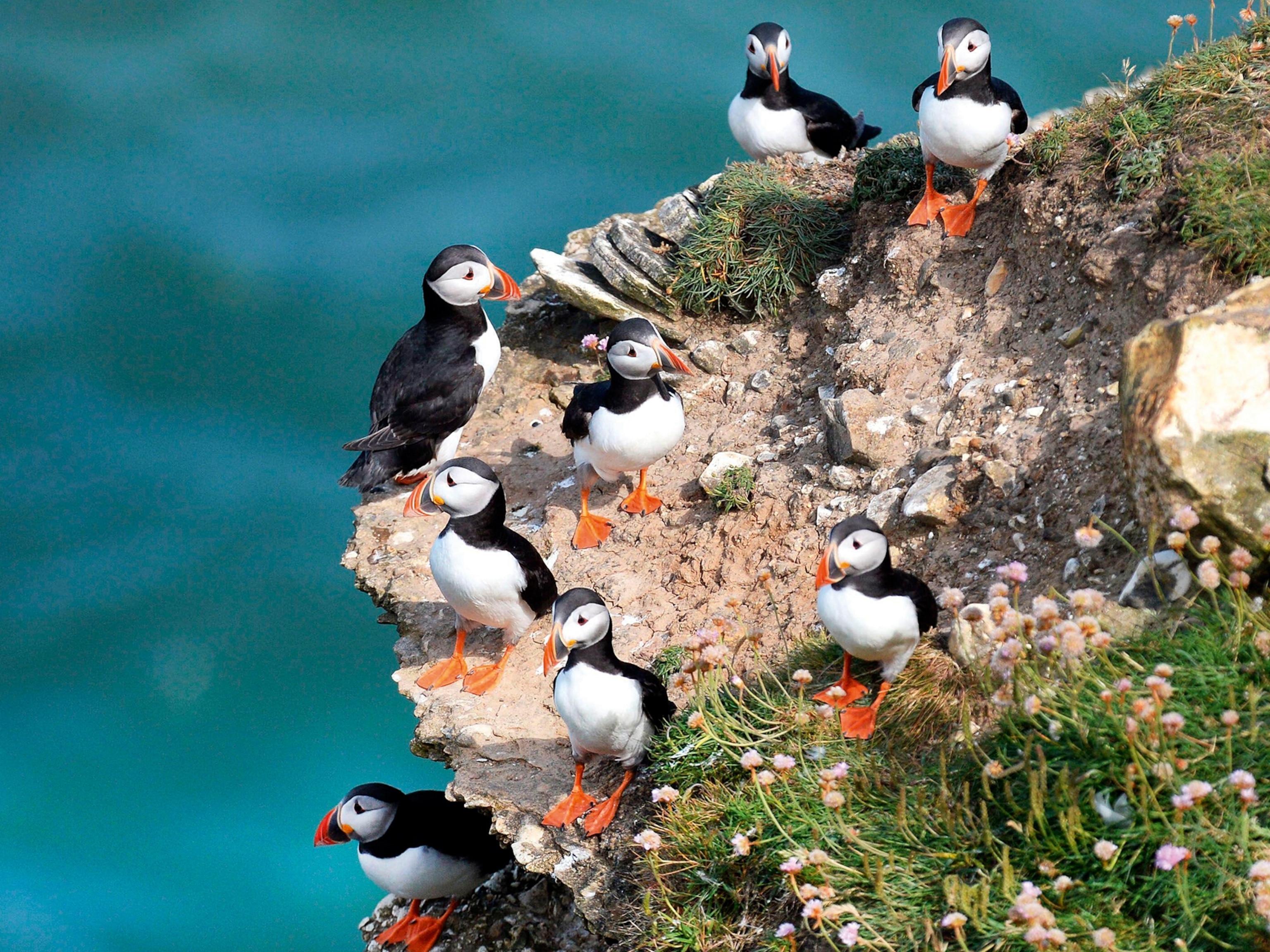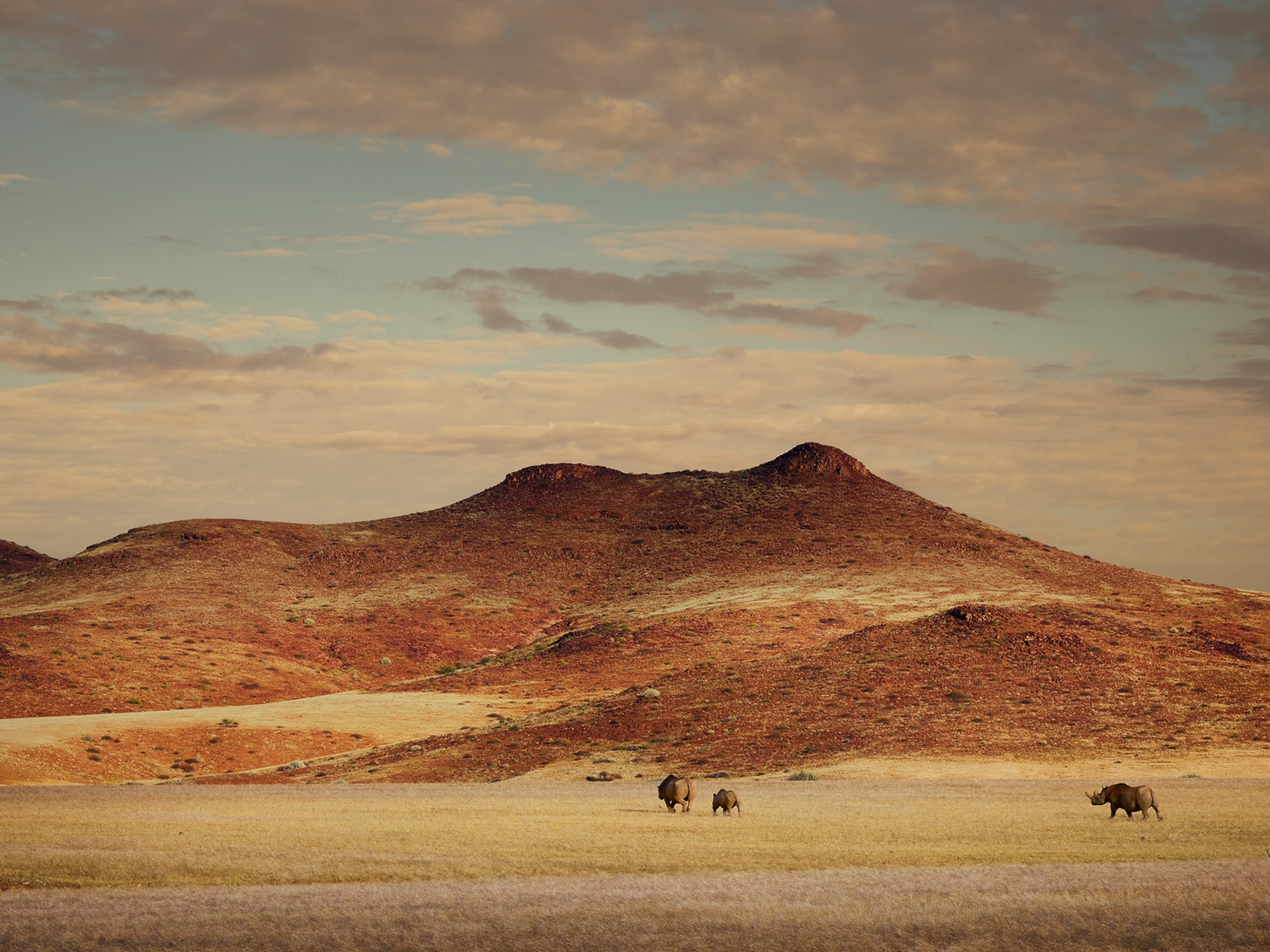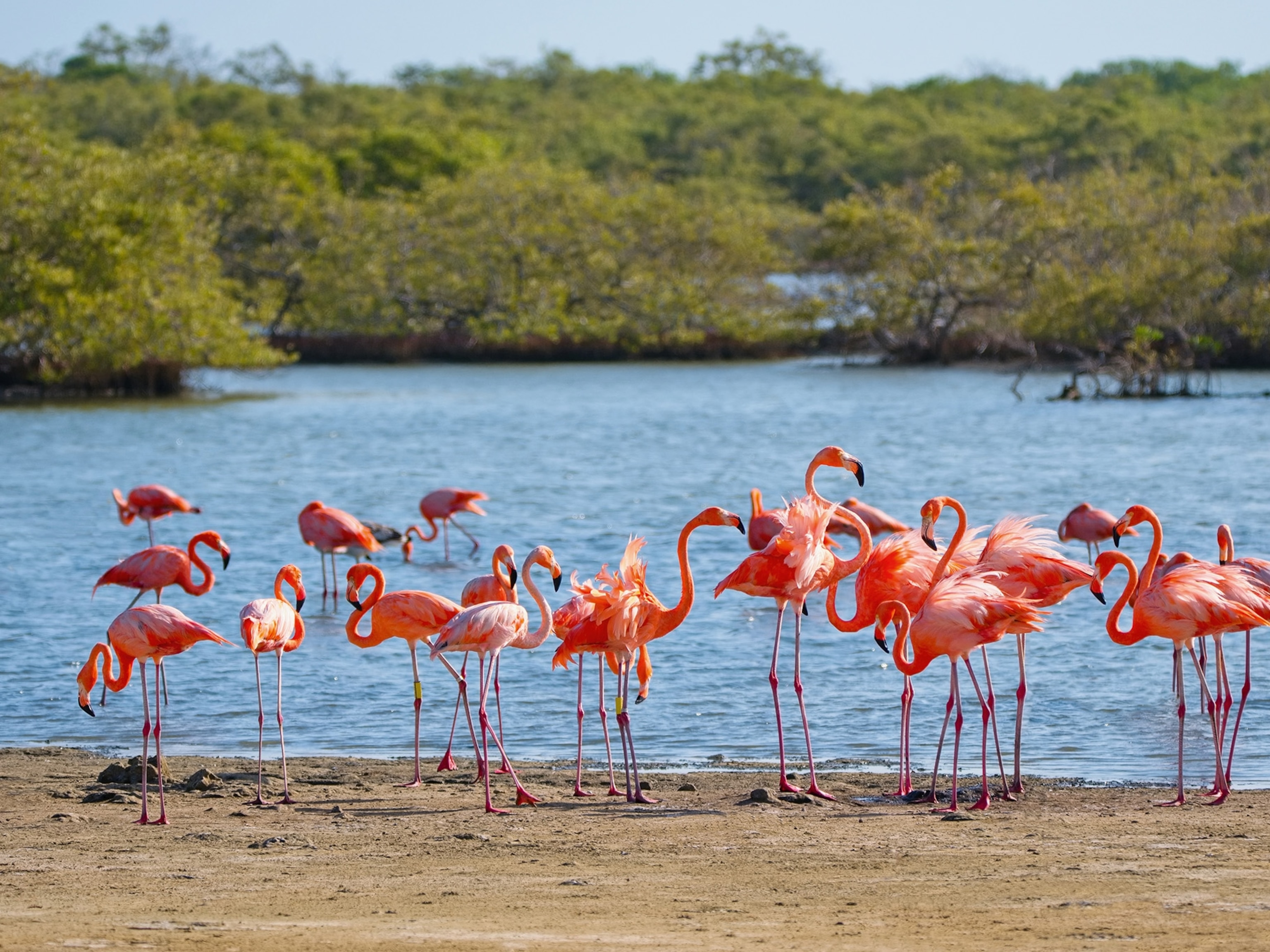Birds of a Feather
Flocking together may help these birds boost their odds of survival in a perilous world.
A flamingo looks like a bird cooked up by an exuberant preschooler—absurdly long legs, knobby ankles (that look like knees), a snaky neck, and an outsize beak—and colored with the brightest crayon in the box. But the sum of its physical oddities enables the Caribbean flamingo to thrive in salt pans, mudflats, tidal lagoons, and mangrove swamps. With its hooked bill it scrapes up clumps of mud to make a nest. Stiff bristles inside its bill filter water containing small crustaceans, mollusks, insects and their larvae, as well as aquatic vegetation.
And the glorious feathers? They seem to exist purely for our delight, but in fact they are not pink at first. Chicks hatch with white feathers that turn gray—and later take their pink color from aqueous bacteria and beta-carotene obtained from their food.
Although flamingos have become a visual cliché immortalized in cheap plastic lawn ornaments, they remain strangely mysterious. “As recognizable as they are, we don’t know much about them,” says Chris Brown, curator of birds at the Dallas Zoo and Children’s Aquarium, who studies the flamingos on Mexico’s Yucatán Peninsula. Scientists are uncertain about even simple behaviors, like the propensity to stand on one leg. (Some postulate that it has to do with the way the birds rest.) And because flamingos live in such remote areas and pick up and move as feeding grounds flood or dry out, researchers have a hard time counting and tracking them—or learning how they may be affected by drought, hurricanes, and fluctuating water levels due to climate change or coastal development.
What we do know is that flamingos in large flocks in the wild are gregarious and fiercely loyal. They perform group mating dances. Parents dote on chicks, gathering them into crèches for protection while both males and females fly off to search for food. And when danger looms, thousands move as one—a ballet that may increase the odds of survival in a perilous world.
